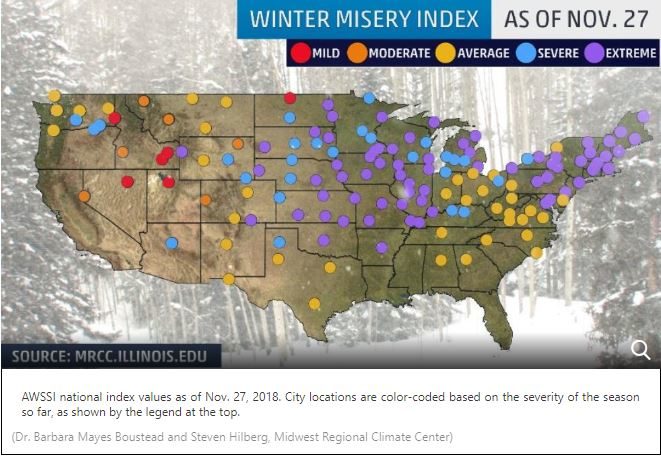
© The Weather Channel (screen capture)
It's already one of the coldest and snowiest starts to the winter season in parts of the Northeast, Midwest and Plains, and we haven't finished November yet.
According to the
Accumulated Winter Season Severity Index (AWSSI) from the Midwest Regional Climate Center,
74 cities from New England to the Plains and Rockies have seen an extreme season-to-date of cold and snow as of Nov. 27.This index
takes into account the "intensity and persistence of cold weather, the frequency and amount of snow and the amount and persistence of snow on the ground," the Midwest Regional Climate Center says. Wind and mixed precipitation, such as freezing rain, are not a part of the index.
The index uses five categories - mild, moderate, average, severe and extreme - to rate the severity of winter weather in cities across the U.S.
For any given location, the start date of the winter season is defined as when the first measurable snowfall (at least 0.1 inches) occurs or when the first high temperature of 32 degrees or lower is recorded. The start date is Dec. 1 for any location that does not see either of those happen before that date.
"The spread among the categories is very narrow this early in the season," said Dr. Barbara Mayes Boustead, a co-creator of the index and an instructor at the National Weather Service's Warning Decision Training Division in Norman, Oklahoma.
Comment: Read also: Europe's Little Ice Age: 'All things which grew above the ground died and starved'